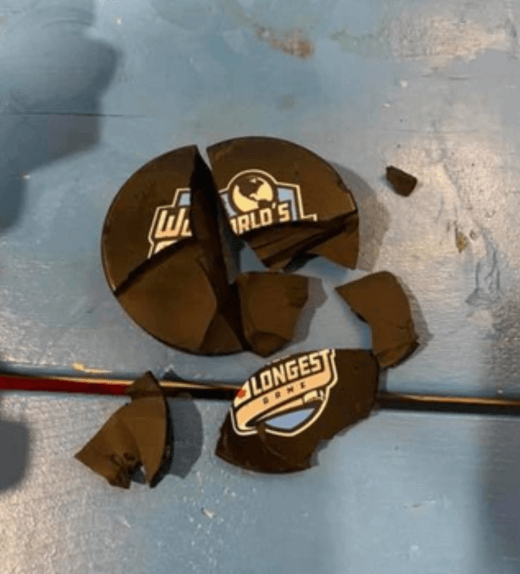As Canadians, many of us don’t allow the cold weather to keep us from enjoying the outdoors and activities that we love. This week near Edmonton, Alberta, 40 players have been attempting to break the record for the World’s Longest Hockey Game in the current frigid temperatures to raise money for life-saving cancer research. While this is the 7th running of this event, temperatures below -30°C and wind chills as low as -50°C during this year’s game have created some unexpected materials challenges.

A hockey puck shattered by use in -30 to -50°C weather, photo courtesy of Andrew Buchanan, goalie at World’s Longest Hockey Game near Sherwood Park
Everyday engineered objects are often used outside of their designed parameters, and in extreme environments we often see failures of the materials in objects we expect to work no matter the temperature. Often in frigid temperatures our concern lies with our furnaces failing and cars not starting, and while they have been experiencing furnace failures in the players’ trailers, the bigger surprise to the players has been the shattering of hockey pucks and sticks. As one player noted: “The first shot I took, my goalie stick just exploded. Other than that, we’ve gone through dozens of pucks. They keep shattering. There’s shrapnel of pucks all over the place.” In this year’s game, we’re seeing these objects used below the temperature for which they’re designed. The extreme cold is changing the properties of the pucks and sticks, causing the materials to become very brittle. When the properties change, the failure of a puck is more like glass than rubber.
And it wasn’t just the pucks from Canada’s most beloved game affected: Edmonton’s Light Rail Transit (LRT) tracks also had issues when the metal tracks cracked due to the extreme cold weather this week.
We can look at these examples of materials failures as a reminder that when the environment gets extreme, the material of the product we’re using may not be up to the task.
Original news story available here: CTV News Edmonton
